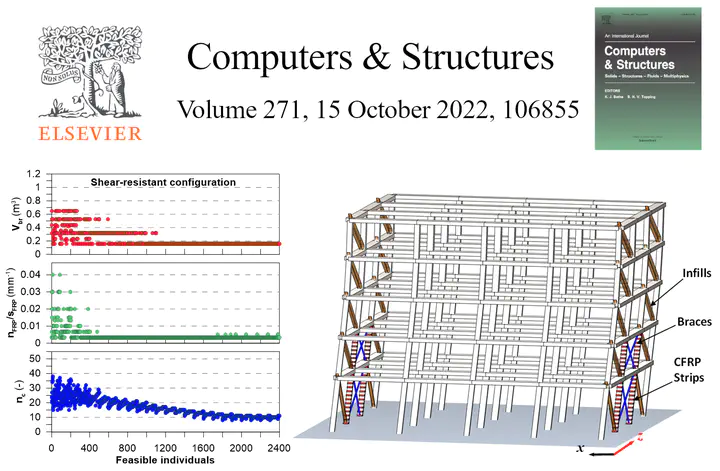AI-based optimization framework for the design of seismic retrofitting of reinforced concrete frame structures based on direct costs and EAL

Abstract
The design of seismic retrofitting of existing structures (e.g. reinforced concrete or masonry structures) concerns the determination of the position and the arrangement of reinforcements or special devices. Currently, this design practice is mainly based on trial-and-error attempts and engineers’ intuition, without a formal implementation of cost / performance optimization. However, retrofitting interventions are generally associated with relevant costs, significant invasiveness, and noticeable downtime. In addition, emerging earthquake-design approaches for existing structures address not only safety compliance, but also consider economic losses during the nominal life. This paper proposes a novel framework, for the optimized seismic retrofitting design of reinforced concrete (RC) frame structures, to minimize retrofitting-related costs and simultaneously controlling the expected annual loss (EAL). The framework makes use of the capabilities offered by artificial intelligence (AI) techniques, adopting a genetic algorithm (GA) based optimization algorithm, handling constrains with a non-penalty approach through the definition of innovative parent and survival selection operators. The proposed framework implements multiple retrofitting techniques optimization for the same structure, so that both serviceability and ultimate limit states are simultaneously controlled. The paper presents the application of the procedure with carbon fiber-reinforced polymers (CFRP) wrapping of columns and steel braces bracing. For both, the framework provides the optimal position (topological optimization) and design (sizing optimization). Results show that retrofitting costs and EAL are effectively controlled by the proposed optimization framework.
Highlights
-
An novel AI-based framework for the seismic retrofitting cost optimization of RC buildings is proposed.
-
The framework also controls service life cost through the evaluation of the expected annual loss (EAL).
-
The method can provide multiple topological and sizing optimization of the reinforcement.
-
The optimization process is based on a genetic algorithm handling a fiber-section model realized in OpenSees.
-
The application of the method can effectively reduce retrofitting costs maintaining a specified EAL.
-
The framework can be implemented as a tool for cost-effective and sustainable design of retrofitting.